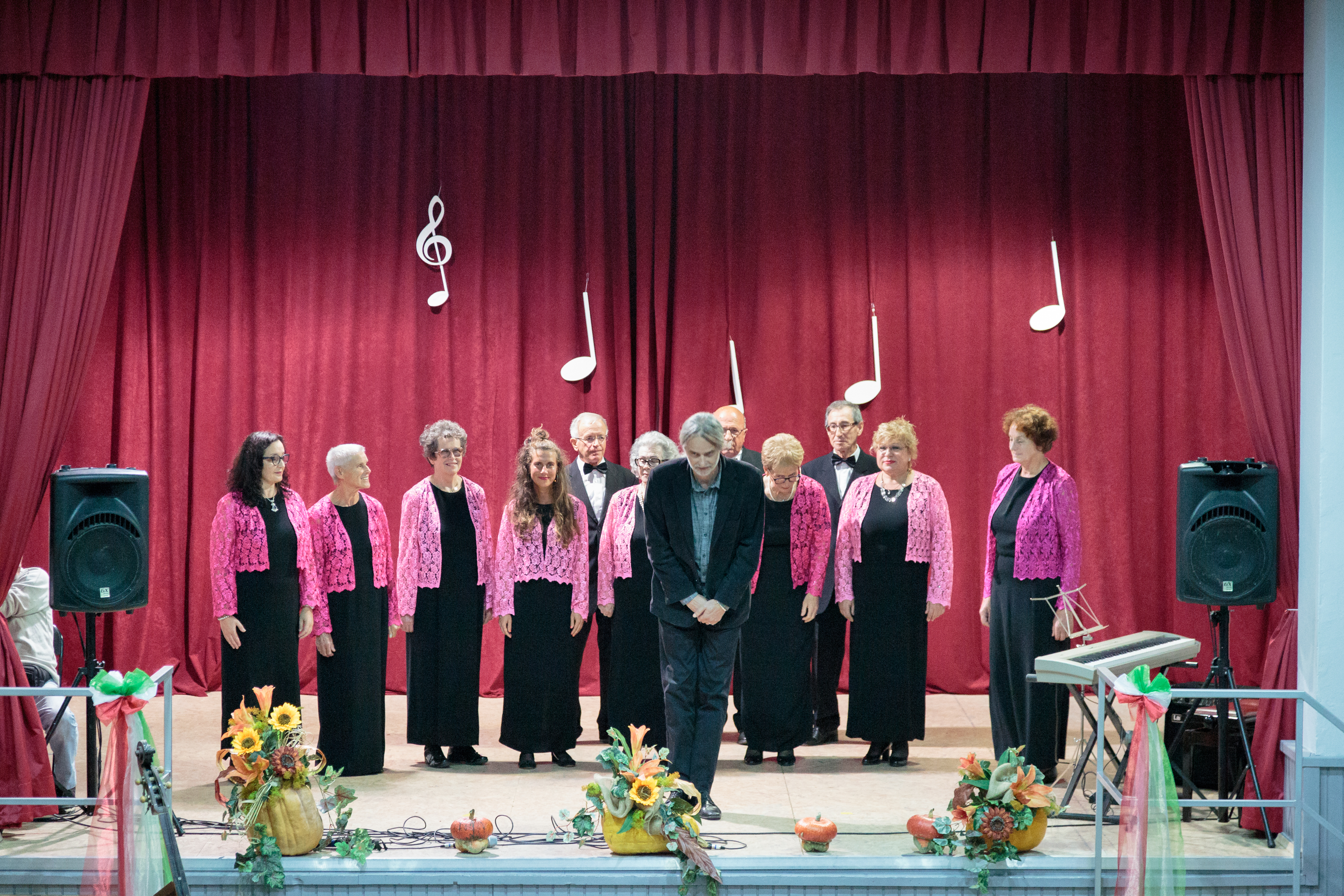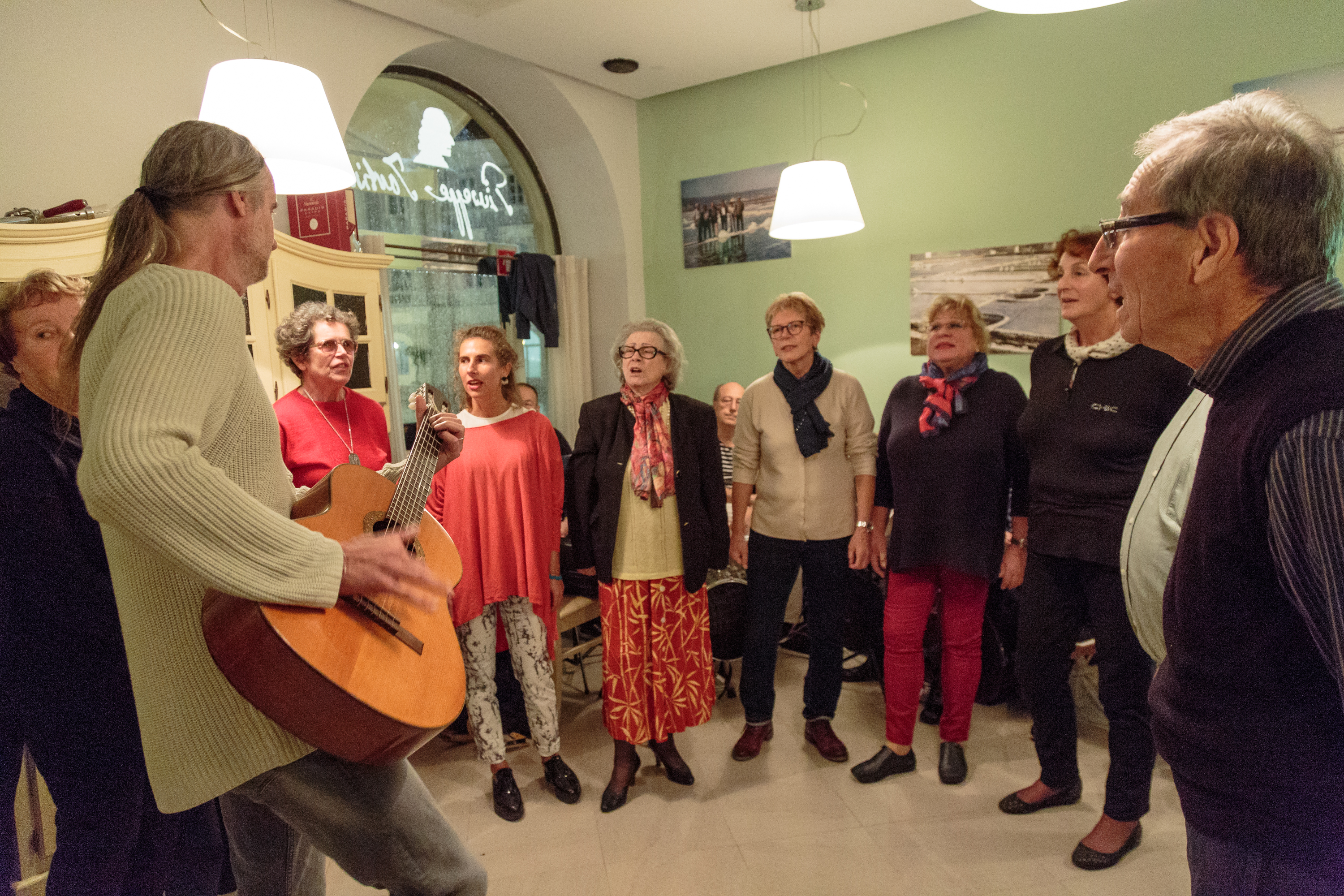Bicchierata per i soci a La Bottega dei Sapori

Rassegna corale “Note d’autunno” a Visinada
10/31/2019
Cabaret Sacco & Vanzetti
11/06/2019
Il ristorante La Bottega dei Sapori che si trova al pianterreno di Casa Tartini, domenica 3 novembre 2019, ha organizzato una bicchierata per i soci della Comunità a conclusione della stagione estiva.
Ad allietare il banchetto sono arrivati gli ospiti da Muggia, il coro “Semplici note” del Muja Folk, nonché la klapa San Lorenzo e il coro misto “Giuseppe Tartini”.
Per l’occasione il Presidente della CAN di Pirano, Andrea Bartole, ha presentato il Progetto imprenditoriale dei fondi garantiti dal Ministero dello sviluppo economico e della tecnologia della Repubblica di Slovenia (MGRT) per lo sviluppo delle aree dove vivono le comunità nazionali italiana e ungherese. Orgogliosi del prodotto autoctono della CNI, ideato e realizzato dai nostri connazionali, dal design di Eva Barbari alla realizzazione dell’officina di Onelio Bernetič, il portachiavi della comunità con alcuni dei principali simboli di Pirano: la figura di S.Giorgio, il patrono, il faro, la firma di Giuseppe Tartini e il suo profilo.
I gestori del ristorante, Sarah Vuk Brajko e Adam Brajko, ringraziano tutti coloro che sono venuti domenica e comunicano che riaprono il 6 dicembre.
Le foto della serata di Nataša Fajon.
—
Restavracija La Bottega dei sapori, ki se nahaja v pritličju Tartinijeve hiše, je v nedeljo, 3. novembra 2019, povabila partnerje skupnosti na kozarček ob zaključku poletne sezone.
Pogostitev so popestrili gostje iz Milj, zbor “Semplici note” iz skupine Muja Folk, ter klapa San Lorenzo in mešani pevski zbor “Giuseppe Tartini”.
Predsednik SI Piran, Andrea Bartole, je ob tej priložnosti predstavil podjetniški projekt, financiran iz sredstev Ministrstva RS za gospodarstvo, namenjenih razvoju območij, kjer živita italijanska in madžarska narodna skupnost. V njegovem sklopu je nastal avtohtoni izdelek italijanske skupnosti, ki so ga zasnovali in izdelali naši rojaki. Gre za obesek za ključe skupnosti, na katerem so predstavljeni glavni simboli Pirana: lik sv. Jurija, zavetnika mesta, svetilnik, podpis Giuseppeja Tartinija in njegov portret. Ideja in design sta delo Eve Barbari, obesek pa je bil izdelan v delavnici Onelia Bernetiča.
Lastnika restavracije, Sarah Vuk Brajko in Adam Brajko, se zahvaljujeta vsem, ki so se udeležili nedeljskega večera, in sporočajo, da bodo vrata restavracije ponovno odprli 6. decembra.


